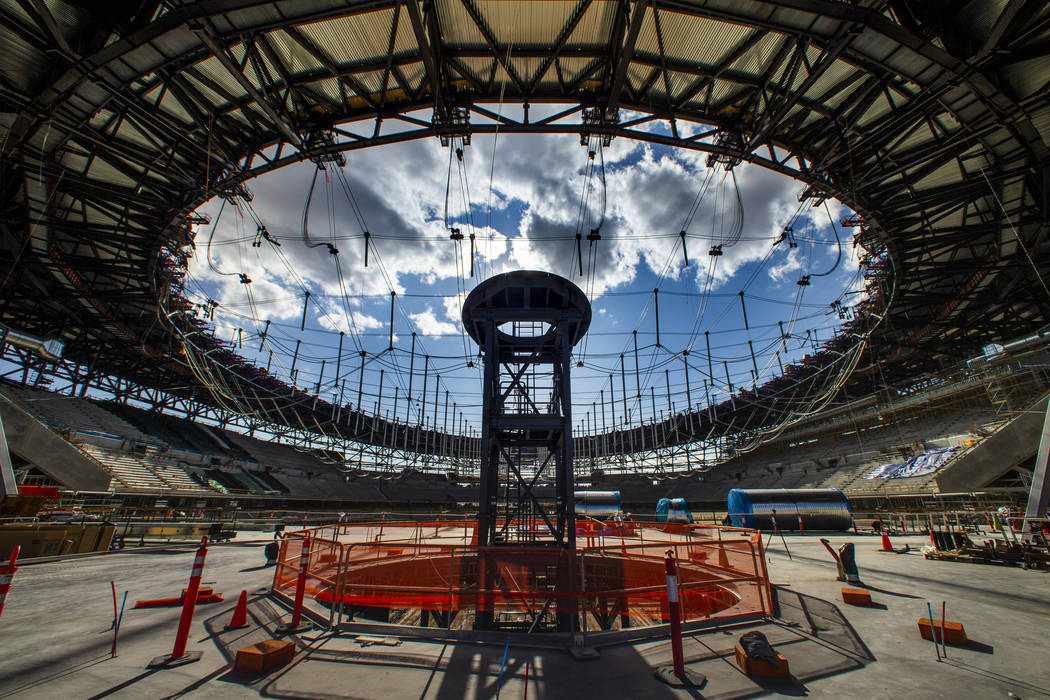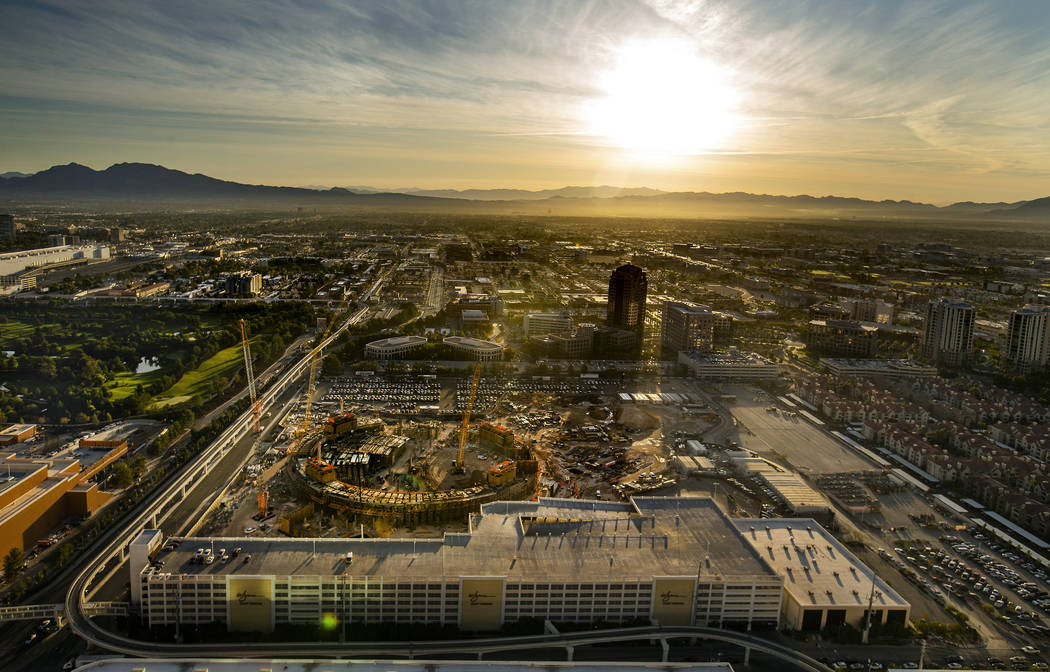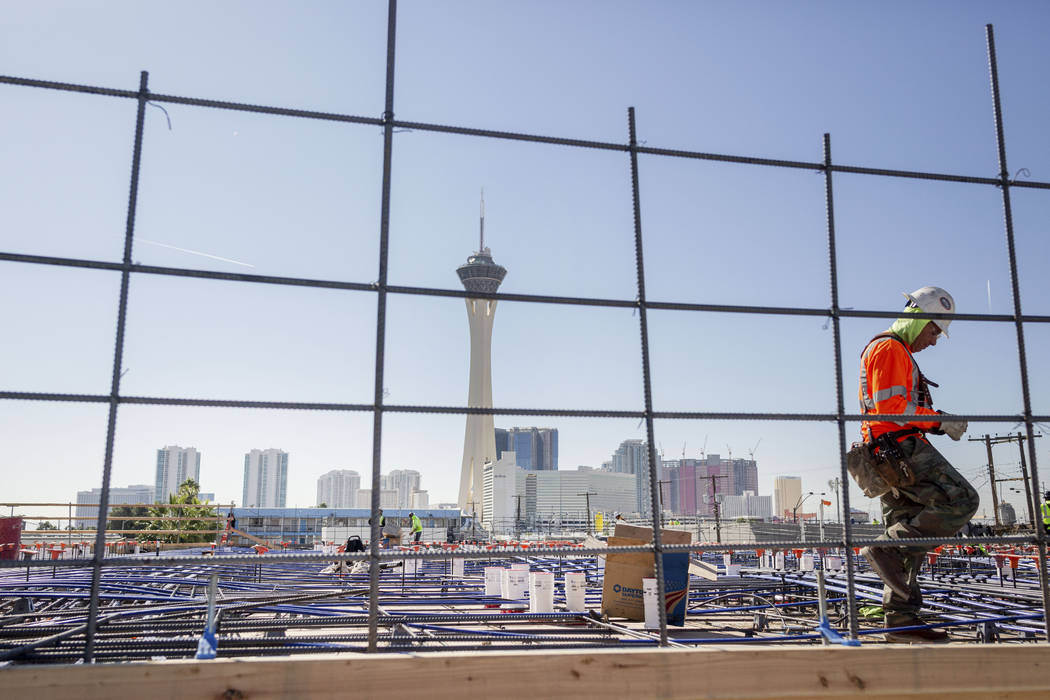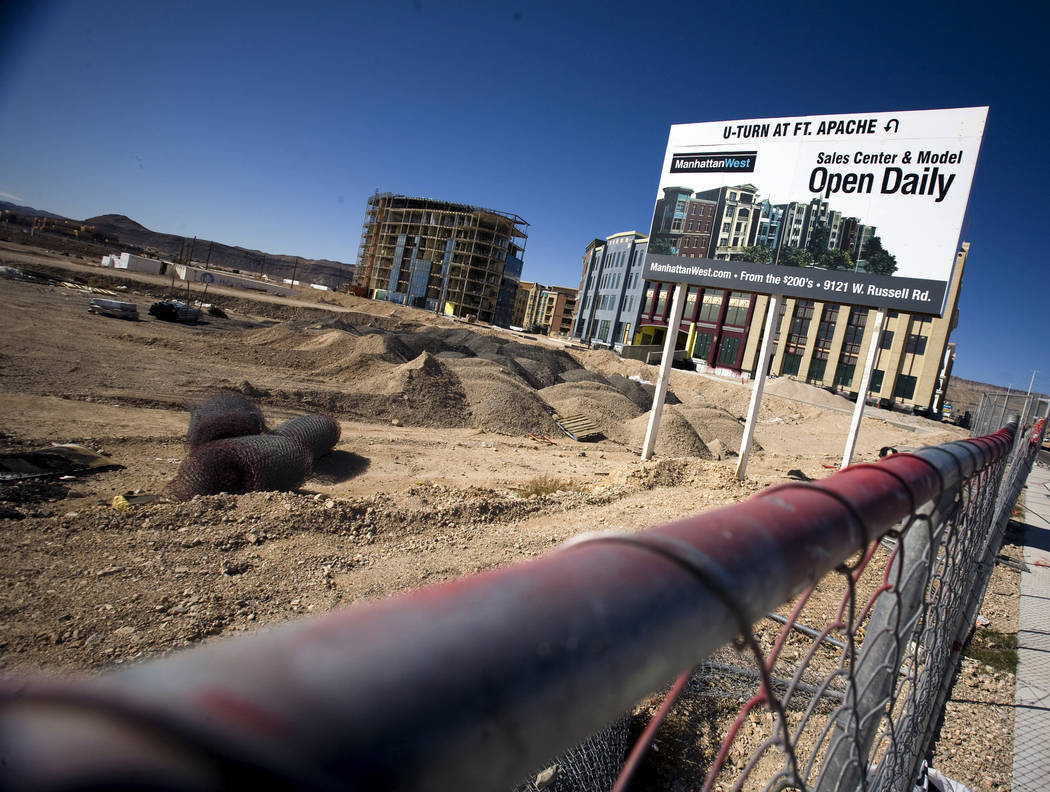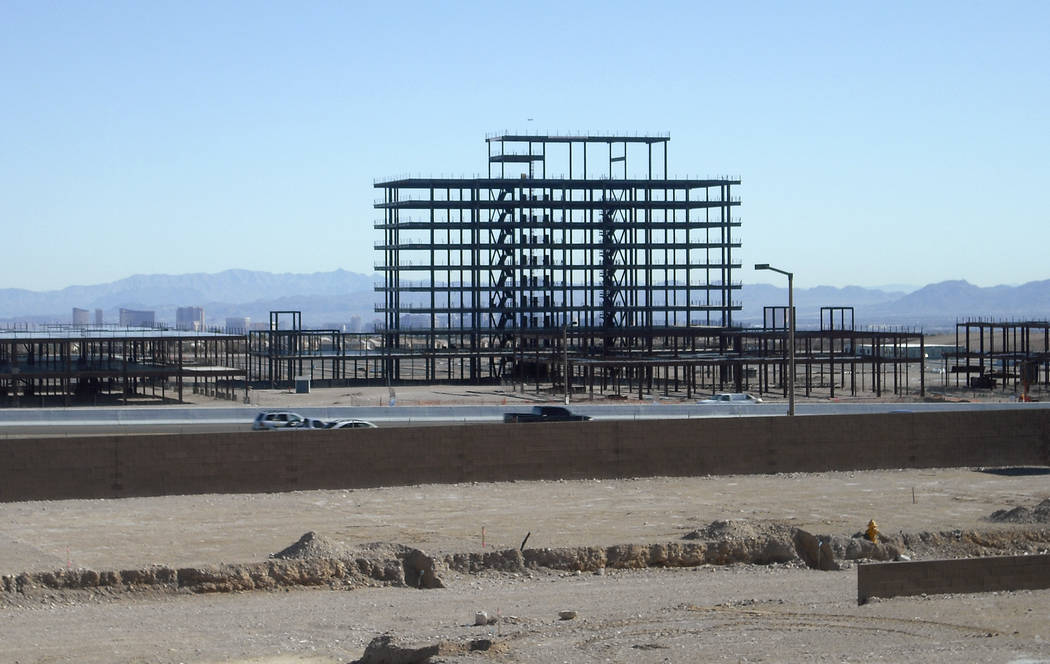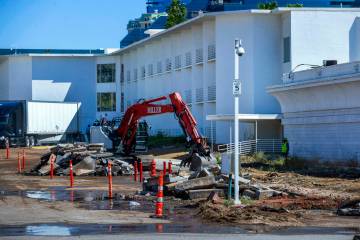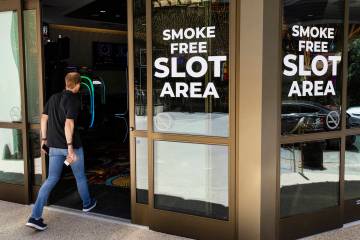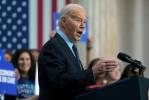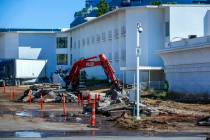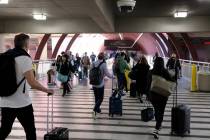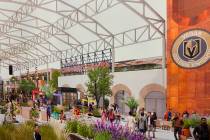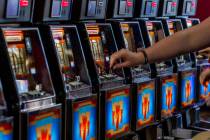Las Vegas has come a long way in the past decade
With the economy in a free-fall in 2009, a tract of desert near the Strip suffered an all-too-common fate in Las Vegas: It went into foreclosure after big plans went nowhere.
Today, the site is buzzing with activity as work crews build one of several billion-dollar projects in town: the 65,000-seat Allegiant Stadium.
Las Vegas has come a long way in the past decade. After its bloated bubble burst, Southern Nevada was ground zero for America’s real state crash amid a tornado of job losses, plunging property values, a near-halt in construction and a foreclosure crisis that left vacant homes throughout the valley, enabling a widespread squatter problem.
Read more.
As the calendar flips to 2020, the economy is on solid footing as construction gains momentum and past housing woes keep fading. But amid talk of another possible downturn, it remains to be seen how long the good times will last in a region that, despite efforts to attract new industries and employers, remains heavily dependent on tourism.
About 29 percent of Clark County’s labor pool worked in leisure and hospitality as of October — the same rate as in October 2006, before the economy tanked, according to data from Las Vegas consulting firm RCG Economics.
Stephen Miller, director of UNLV’s Center for Business and Economic Research, noted the resort industry has created more revenue streams. As gambling has slid in popularity, casino operators have rolled out new restaurants, retail and other places to spend money, as well as parking fees.
“But if visitors don’t come, they’re in trouble,” Miller said.
Overall, Las Vegas is in “pretty decent shape,” and there are no signs of a major recession ahead, RCG founder John Restrepo said.
Plus, he figures the valley is better positioned to withstand a downturn, noting officials have taken steps to diversify the economy, and lending standards are tighter than they were in the boom days.
“We’ve climbed a long way from the deep hole we were in,” he said.
‘It’s all connected’
Today, the scars of the recession have largely faded. Las Vegas’ unemployment rate was 4.2 percent in October, down from 14 percent in October 2010, federal data show. Moreover, so-called distressed homes have largely disappeared.
Purchases at foreclosure auctions and sales of foreclosed or underwater homes comprised just 3.3 percent of resales in the valley this year as of November, down from almost 73 percent in 2011, according to Las Vegas consulting firm Applied Analysis.
A key lesson from the crash was the valley should not rely so heavily on just a couple of industries — tourism and real estate — to power everything. Locals often point to the new data centers, e-commerce distributors and pro sports teams as signs that Southern Nevada is becoming a well-rounded place.
But economic diversification is a “ship that turns slowly,” said David Schmidt, chief economist with the Nevada Department of Employment, Training and Rehabilitation.
Despite the new employers, hotel-casinos remain the valley’s lifeblood.
“Las Vegas is unlike any other city in the world in that regard,” Schmidt said.
Meanwhile, Las Vegas seems unlikely to take a direct hit from any trade-war-inflicted pain on the U.S. agriculture and manufacturing industries. But if people in affected communities cut back on vacations, Southern Nevada could get fewer visitors, according to Restrepo.
“It’s all connected,” he said.
‘It was crazy’
Southern Nevada grew fast for decades, but a flood of easy money pushed things into hyperdrive in the mid-2000s.
Construction boomed, property values soared, house flippers were everywhere and investors drew up plans for waves of condo towers, a high-rise craze dubbed the “Manhattanization” of Las Vegas.
With lenders giving mortgages to practically anyone, builders sold homes with ease. Kevin Orrock, president of the Summerlin community for developer Howard Hughes Corp., said demand for houses far outstripped supply, and builders would raise prices by tens of thousands of dollars over a weekend.
“It was crazy,” he said.
Orrock walked into a builder’s sales office in Summerlin back then. The staff didn’t know him, and after asking what he needed to do if he was interested in buying a place, a saleswoman handed him a list and told him to write his name down.
There were 900 people ahead of him.
Eric Cohen moved to Las Vegas in 2006 to open a new division for an apartment developer. It wanted to expand here because the market “was on fire,” he recalled.
He got four or five deals going and resigned on his 30th birthday to start his own company, The Calida Group, with partner Doug Eisner.
It was the summer of 2007. A little over a year later, the economy was crashing around them.
‘Not fun days’
When financial giant Lehman Brothers went bankrupt in September 2008, the already-stumbling economy did a face-plant. America was having its worst recession in decades, and Las Vegas was hit harder than practically everywhere else as its wild real estate market came to a crashing halt.
“No one wanted to touch Las Vegas,” Cohen said. “The housing market was so destroyed.”
The valley became littered with abandoned, partially built projects and vacant lots where others never materialized. Most of the proposed high-rises were never built, with a few developers leaving giant holes in the ground.
The failed project sites included the current home of Allegiant Stadium, at Russell Road and Interstate 15. In 2004, investors drew up plans for a nearly 7 million-square-foot project with hotels, condos and a convention center. But it was never built, and the land was lost to foreclosure after the economy imploded, county records show.
In the suburbs, a big monument to the meltdown was the outdoor mall now known as Downtown Summerlin.
Owned by Hughes Corp., the 106-acre project at Sahara Avenue and the 215 Beltway opened in 2014, is normally filled with people walking around and, Orrock said, is about 95 percent occupied with tenants. But its former owner halted construction as the economy spiraled, leaving a steel skeleton that sat for years off the side of the freeway.
Foreclosures also were everywhere, and people who lost their home were “pissed off, and they took it out on the house on the way out,” Orange Realty Group managing broker Tom Blanchard recalled.
They took ceiling fans, appliances, even electrical-outlet covers. People also bashed holes in the walls, broke mirrors and committed other vandalism.
“Those were not fun days,” Blanchard said.
‘Never want to see that again’
In time, the economy slowly turned around. Las Vegas’ housing market was revived by bargain-hunting investors who bought cheap homes in bulk to turn into rentals. Developers finished mothballed projects, often after buying them at steep discounts. Homebuilders’ sales picked up after evaporating during the recession, and tourism rebounded.
Apartment developers have been especially busy, and Calida is now among the biggest in town. Cohen said he and Eisner went from one $10 million deal in 2008 to $950 million in projects and acquisitions in 2019.
Investors also have been pouring money into Las Vegas to buy commercial property. New York financial giant The Blackstone Group, which has been on a buying binge in Southern Nevada for years, recently purchased the Bellagio’s real estate for more than $4 billion — by all appearances the most expensive sale ever of a Las Vegas resort.
Several supersized projects are taking shape as well, including the $4.3 billion Resorts World Las Vegas and the Raiders’ new $2 billion football stadium, backed by $750 million in public funds.
Such projects bring a short- to medium-term boost in spending during construction, though in the long run, their success is tied to the broader economy and ability to get customers, RCG’s Restrepo said.
Despite the increased activity, Las Vegas’ real estate market remains a shadow of the old one in some ways. Builders aren’t selling nearly as many homes as they did before the crash, and with numerous high-rise projects back then, people used to joke that Nevada’s state bird should be the crane.
Still, as construction picks up heading into the new decade, real estate pros often say they don’t want a repeat of the old boom days, given how badly they ended. Orrock is one of them.
“I never want to see that again,” he said.
Contact Eli Segall at esegall@reviewjournal.com or 702-383-0342. Follow @eli_segall on Twitter.



